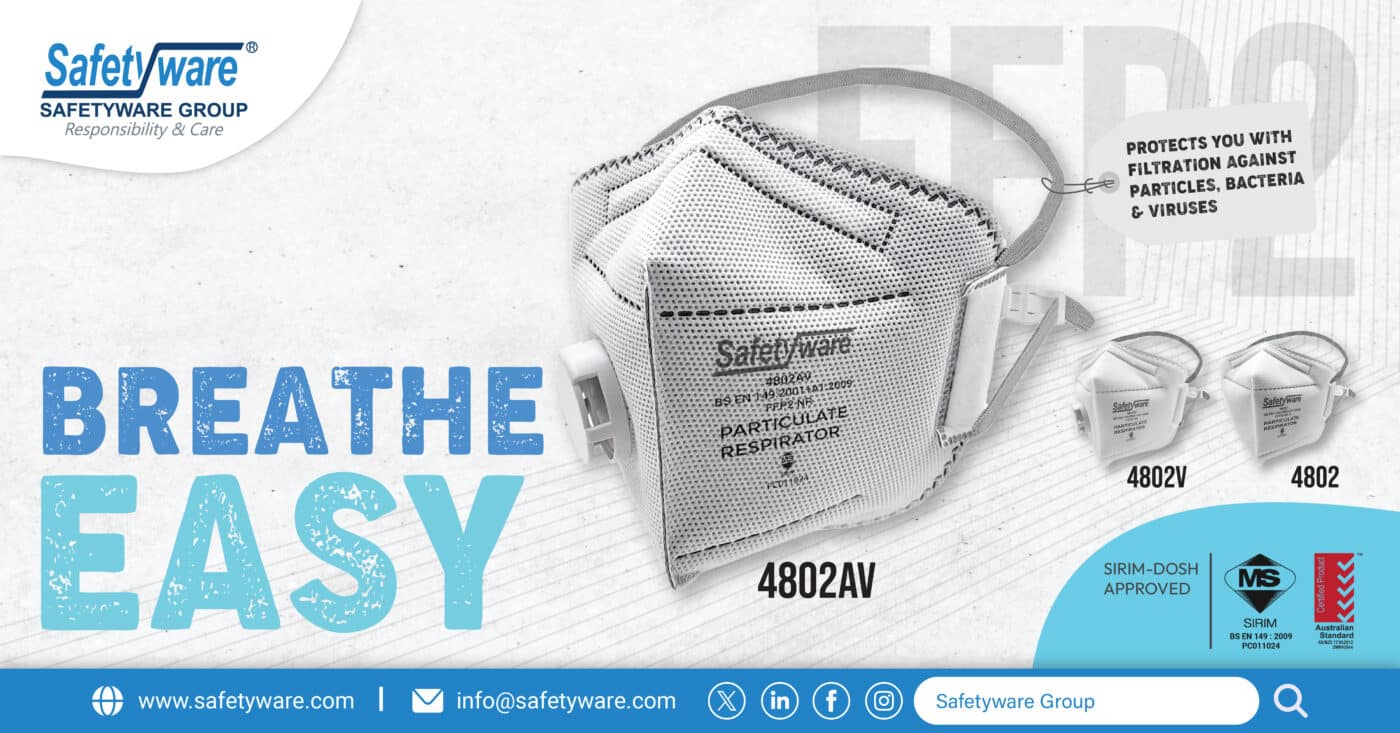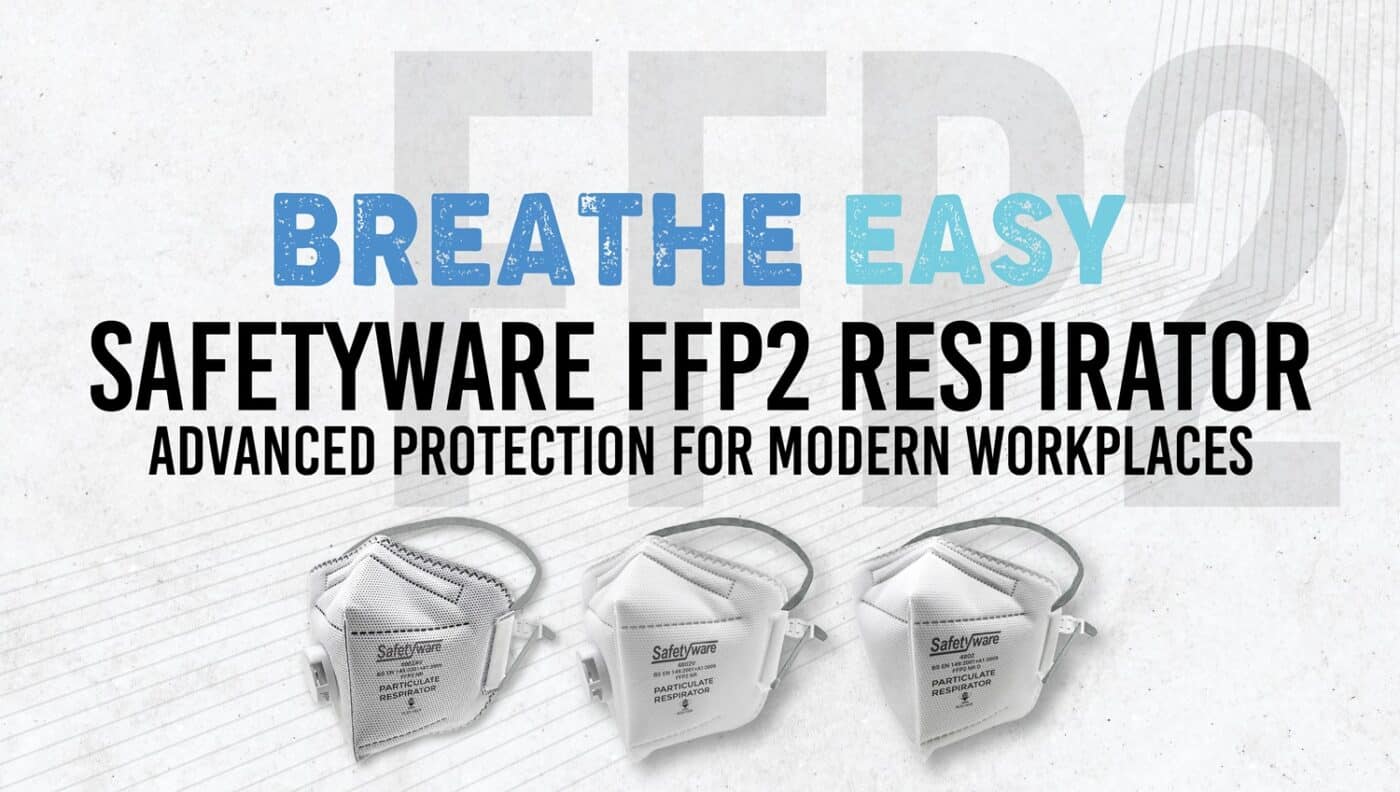Exploring FFP2 Particulate Respirators: Safeguarding Respiratory Health
First, particulate respirators protect workers’ respiratory systems from airborne particles like dust, smoke, and mist. Specialized filter media draws in ambient air, trapping harmful contaminants through impaction, interception, and diffusion. These respirators work best in oxygen-rich environments where filters can reliably capture known contaminants.
European standards separate respirators into FFP1, FFP2, and FFP3 based on filtration efficiency. The FFP2 model filters at least 94% of particles as small as 0.3 microns. Many designs include exhalation valves to ease breathing, reduce heat buildup, and improve comfort. They also defend against both oil-based and non-oil-based particulates.
FFP2 vs. N95: Key Differences
1. Filtration Efficiency:
- N95: Certified by the U.S. NIOSH under the 42 CFR 84 standard, it filters at least 95% of airborne particles (non-oil-based) with a mass median aerodynamic diameter of 0.3 microns.
- FFP2: Certified under the European EN 149 standard, it filters at least 94% of airborne particles, including both solid and liquid aerosols.
2. Testing Protocols:
- N95: Tested using sodium chloride (NaCl) particles at a flow rate of 85 L/min.
- FFP2: Tested with both sodium chloride (NaCl) and paraffin oil particles at a flow rate of 95 L/min, which may simulate broader conditions.
3. Breathability and Pressure Drop:
- Both standards test for inhalation and exhalation resistance (pressure drop), but the specific flow rates differ slightly. FFP2 uses higher flow rates, which can result in slightly different breathability characteristics compared to N95.
4. Fit and Seal Integrity:
- Both respirators require a tight fit to function effectively, but their designs may vary slightly due to regional preferences or manufacturing practices. For example:
- N95 masks often use headbands for a secure fit.
- FFP2 masks may use ear loops or headbands, depending on the manufacturer, which can affect the seal integrity.
5. Use Cases and Standards Context:
- N95: Primarily used in the U.S. for healthcare and industrial applications, such as protection against respiratory diseases or particulate hazards like wildfire smoke.
- FFP2: Commonly used in Europe for similar purposes but also includes additional testing for liquid aerosols, making it suitable for broader environments like construction or chemical industries.
Summary Table:
| Feature | N95 (NIOSH) | FFP2 (EN 149) |
|---|---|---|
| Filtration Efficiency | ≥95% | ≥94% |
| Test Agents | NaCl | NaCl + Paraffin Oil |
| Flow Rate | 85 L/min | 95 L/min |
| Fit Design | Headbands | Ear loops or headbands |
| Certification Region | U.S. | Europe |
Key Features of the SAFETYWARE FFP2 Respirator
Enhanced Filtration Performance
- An exhalation valve with activated carbon delivers superior filtration against 0.3-micron particles.
- It protects effectively against oil-based and non-oil-based particulates.
Comfort-Driven Design
- Adjustable headstraps ensure a secure, custom fit for all-day wear.
- A concealed nose clip improves facial conformity and safety.
Convenient & User-Friendly
- The foldable design allows easy storage and transport.
- Individual packaging keeps each unit hygienic and ready to use.

Why Choose SAFETYWARE FFP2?
Lastly, SAFETYWARE doesn’t just meet safety standards—we exceed them. Our respirator combines advanced filtration with ergonomic design to protect workers in danger environments. It prioritizes comfort during long shifts and adapts perfectly to diverse workplace conditions. This product reflects our commitment to innovation, quality, and safety. Explore more respiratory protection HERE
📘 Seeking for other safety solution? Click HERE
Any Questions? Contact Us:
📩 Email: [email protected]
🌐 Website: www.safetyware.com
📞 Contact us: WhatsApp

